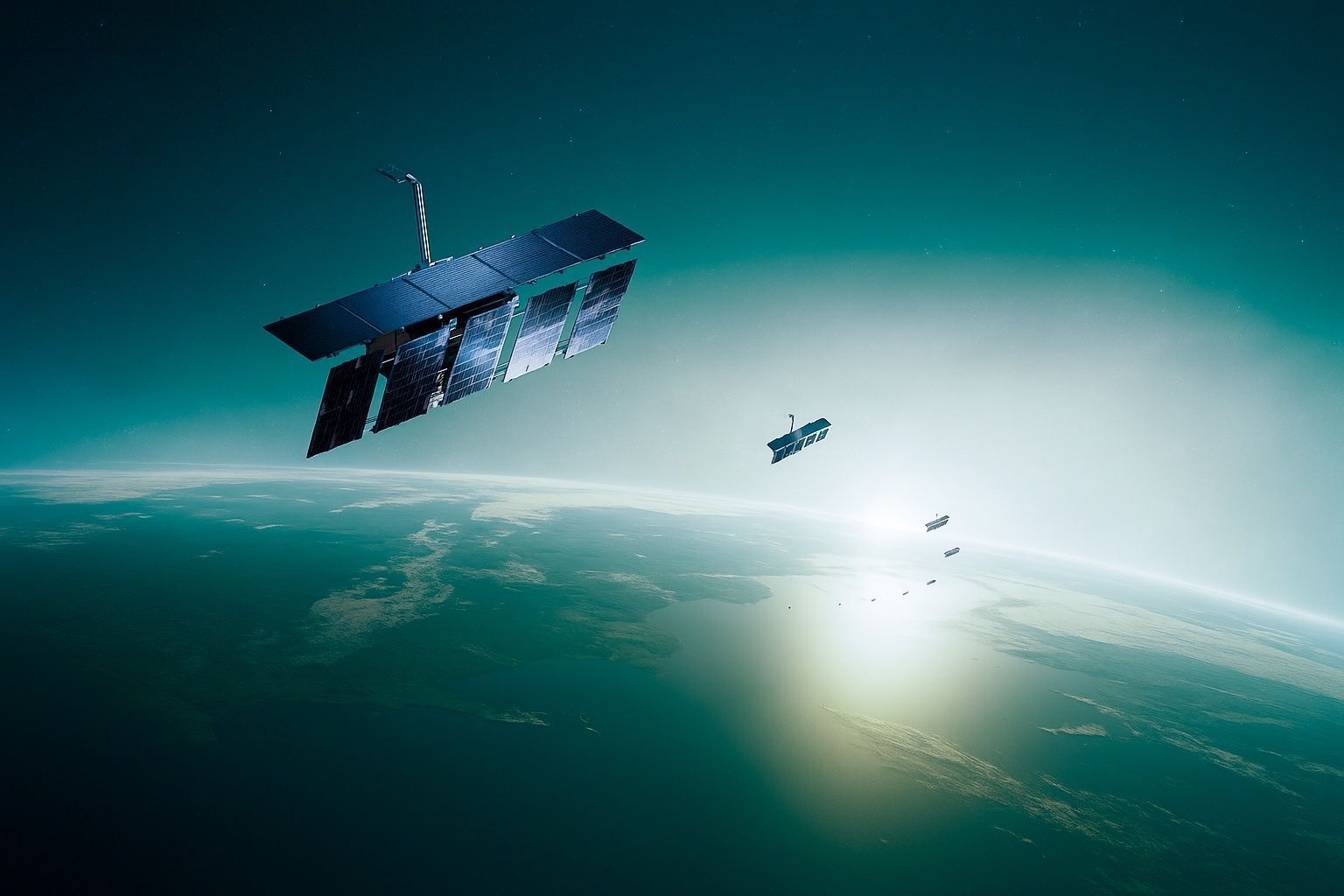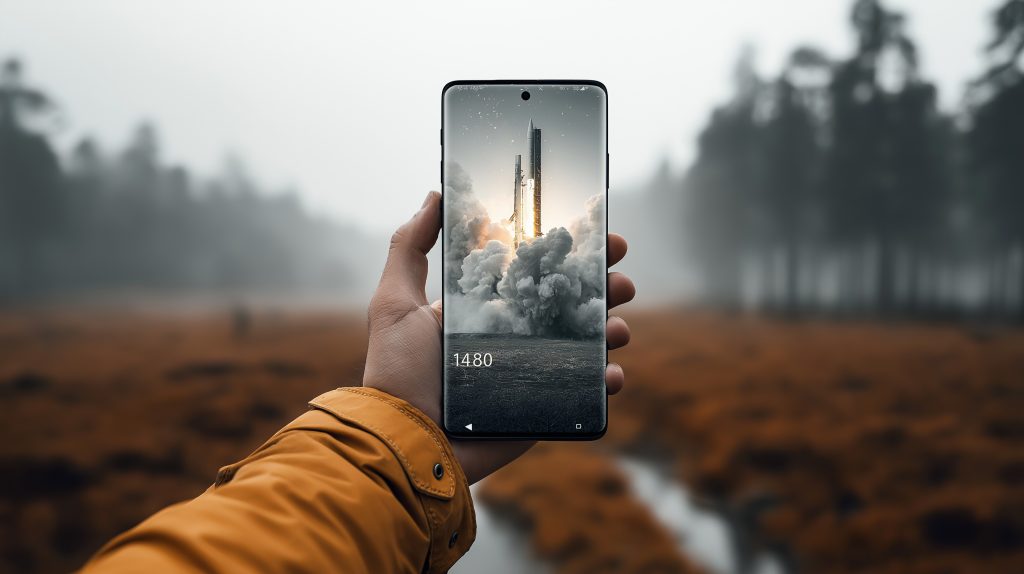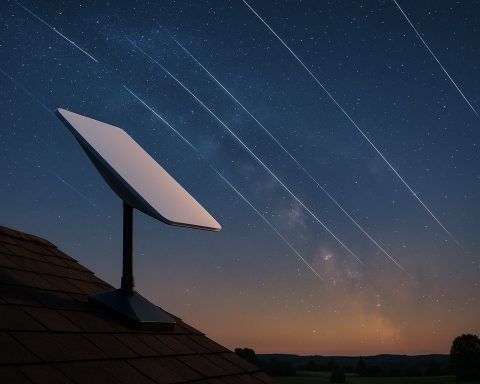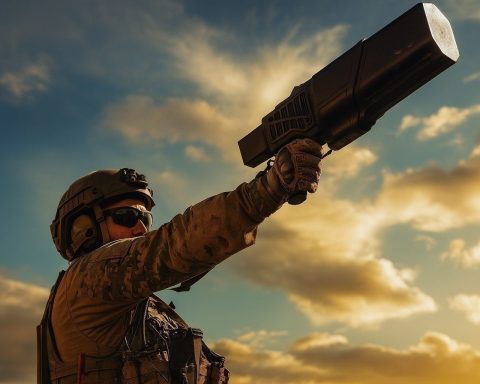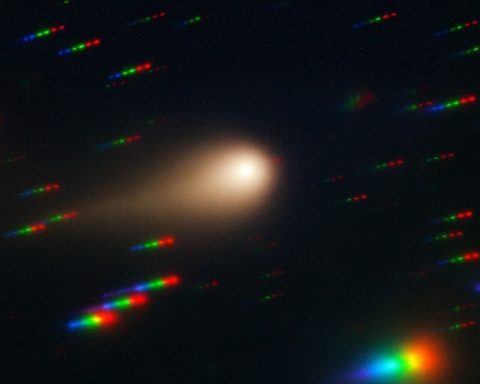- NATO Allied Command Operations signed a multiyear agreement to receive 24/7 SAR imagery from ICEYE and feed it into the APSS Aquila constellation, announced on 24 June 2025.
- ICEYE’s 54-satellite Synthetic Aperture Radar fleet can be tasked within eight hours, and in some cases within one hour, for sea- and land-tracking.
- ICEYE satellites deliver 25 cm ground resolution and have revisit intervals under three hours at mid-latitudes.
- APSS Aquila pairs ICEYE’s 25 cm SAR with Planet Labs SkySat optical data at 50 cm RGB and supports sub-daily tasking.
- Contract value was not disclosed, but analysts estimate it is in the seven-figure range, in the same ballpark as Planet’s APSS deal but with larger data volumes and a dedicated ground interface.
- APSS originated at NATO’s 2023 Defence Ministerial and now has 17 signatory nations and a €1 billion five-year budget.
- The Aquila codename reflects its eagle-eye concept of stitching government and commercial sensors into near-real-time imagery.
- Aquila-1 operational test is planned for Q4 2025, fusing ICEYE, SkySat and France’s CSO-3 optical imagery inside NATO’s BICES cloud.
- RF geolocation payload RFP closes in September 2025 with HawkEye 360 and Kongsberg tipped to bid.
- Experts warn that without strong cybersecurity, data-fusion AI maturity, and a resilient European industrial base, NATO risks data deluge or cyber sabotage.
NATO’s biggest space-data deal to date pairs the Alliance’s new Alliance Persistent Surveillance from Space (APSS) programme with the world’s largest commercial radar-satellite fleet, run by Finnish unicorn ICEYE. Below you’ll find a deep-dive on what the contract actually covers, why it matters strategically and commercially, the technology under the hood, and the open questions still keeping generals and investors awake at night.
Key take-aways (one-paragraph executive summary)
NATO’s Allied Command Operations has signed a multiyear agreement for 24/7 Synthetic Aperture Radar (SAR) imagery from ICEYE, slotting those feeds into the APSS “Aquila” virtual constellation alongside Planet Labs’ SkySat optical data. The deal, announced 24 June 2025, gives commanders hour-scale tasking and sub-metre radar resolution in any weather, dramatically shortening the Alliance’s “sensor-to-decision” loop. It also marks the second ICEYE–NATO contract in three months and follows a €41 million Finnish R&D injection into the firm, signalling both political and financial momentum. Yet integrating dozens of commercial and national satellites raises cybersecurity, data-fusion and industrial-base challenges that experts warn NATO must tackle fast.
1. What exactly did NATO buy from ICEYE?
- Contract scope. The new agreement allows NATO ACO to directly task ICEYE’s 54-satellite SAR fleet and pull imagery within eight hours (and as little as one) for sea- and land-tracking across the Alliance [1].
- Technical specs. ICEYE’s satellites provide 25 cm ground resolution — comparable with classified U.S. military radar birds — and have proven revisit intervals of under three hours at mid-latitudes [2].
- Why radar beats clouds. Unlike optical sensors, SAR penetrates darkness and weather. That 24/7 reliability was the single most requested feature during NATO’s APSS requirements workshops, according to NCIA officials [3].
- Contract value? Neither party disclosed numbers, but analysts note Planet Labs’ earlier APSS deal was a “seven-figure” contract; ICEYE’s is believed to be in the same ballpark but includes larger data volumes and a dedicated ground interface [4].
Expert view
“Our proven satellites provide actionable intelligence for rapid decision-making for NATO and allied countries.” – Pekka Laurila, ICEYE Co-founder & CSO [5]
2. The APSS “Aquila” virtual constellation in context
| Pillar | Commercial partner(s) | Capability |
|---|---|---|
| Radar imaging | ICEYE | 25 cm SAR, <1 h task-to-image |
| Optical imaging | Planet Labs (SkySat) | 50 cm RGB, sub-daily tasking |
| Broadcast AIS & RF | TBD – RFP now open | Maritime domain awareness |
| Processing layer | NCIA cloud & AI stack | Automated fusion and alerts |
- Origins. APSS was created at NATO’s 2023 Defence Ministerial and now has 17 signatory nations and a €1 billion five-year budget [6].
- “Aquila”. The constellation’s codename reflects its eagle-eye concept: stitching government and commercial sensors into one near-real-time picture [7].
- Governance. NCIA runs the technical backbone, while ACO owns tasking priorities; data is classified up to “NATO-Secret” once fused [8].
Expert view
“Integrating and exploiting data from space effectively has been a growing challenge … APSS will help advance NATO’s innovation agenda.” – NATO press office quoted by Mikayla Easley, DefenseScoop [9]
3. Why SAR matters in today’s threat environment
- Russia & Ukraine lessons. Open-source SAR proved critical for tracking Russian troop build-ups despite heavy cloud cover in early 2022; NATO wants that capability inside its classified network [10].
- Arctic surveillance. Finland and Norway pushed APSS to prioritise X-band radar to monitor ice-blocked northern sea routes, where optical satellites fail half the year [11].
- Hyperspectral gap filler. SAR change-detection cues where to order higher-cost optical or hyperspectral shots, cutting bandwidth and analyst workload [12].
4. Follow-the-money: rapid growth in the European space-defence sector
- Finnish state support. Business Finland granted €41.1 million to ICEYE days before the NATO deal to boost production capacity [13].
- Planet Labs momentum. Planet’s APSS contract and subsequent NATO “seven-figure expansion” drove its government revenue up 22 % YoY [14].
- Competitive field. Airbus, Maxar and UK-based SSTL are lobbying for the next APSS tranche covering RF sensing, insiders tell SpaceNews [15].
5. What the experts still worry about
| Challenge | Details | Source |
|---|---|---|
| Cyber intrusion | Commercial supply chain lacks unified hardening standards | Chatham House study [16] |
| Data overload | APSS will ingest petabytes/day – fusion AI still immature | Atlantic Council report on NATO C4ISR [17] |
| Industrial fragility | Only a handful of EU radar-sat makers exist; bottleneck risk | Reuters industry analysis [18] |
| Policy lag | NATO classification rules slow sharing with national intel cells | NATO ISR factsheet update [19] |
Expert view
“Future security will be massively dependent on satellite constellations.” – Rafal Modrzewski, ICEYE CEO, interview with Reuters [20]
6. Strategic implications
- Shorter kill-chain. Hour-scale radar tasking feeds into Allied Joint Fires networks, fitting the emerging Multi-Domain Operations concept.
- Deterrence by transparency. Persistent, shareable imagery raises the cost of surprise aggression by exposing troop movements within hours, not days.
- European sovereignty. APSS reduces reliance on U.S. Space-Based Infrared System and unclassified commercial feeds, a long-standing EU complaint.
- Commercial-military fusion. The deal accelerates the trend of buying “Pixels-as-a-Service” instead of owning satellites, echoing Starlink’s influence on Ukraine’s comms.
7. The road ahead
- Next milestones. An “Aquila-1” operational test is planned for Q4 2025, fusing ICEYE, SkySat and France’s CSO-3 optical imagery inside NATO’s BICES cloud, according to NCIA sources [21].
- Bid watch. A request for proposals for RF geolocation payloads closes in September 2025; industry insiders tip U.S. start-up HawkEye 360 and Norway’s Kongsberg to bid.
- Policy update. NATO’s Defence Production Action Plan released today promises “leaner rules” for space procurements — a boon for smaller firms [22].
ICEYE’s radar deal is more than a one-off contract: it is the cornerstone of NATO’s attempt to knit national, commercial and allied satellites into a single intelligence mesh. If APSS hits its milestones, commanders may soon enjoy hour-by-hour, all-weather insight over any hotspot from the Arctic to the Sahel. But without aggressive cybersecurity, smart data-fusion AI and a resilient European industrial base, the Alliance risks drowning in its own data deluge or falling prey to cyber sabotage. The next 18 months — culminating in the “Aquila-1” live test — will show whether NATO can turn this shiny stack of satellites into real-time strategic advantage.
References
1. www.iceye.com, 2. www.joint-forces.com, 3. www.ncia.nato.int, 4. www.businesswire.com, 5. www.iceye.com, 6. defensescoop.com, 7. www.nato.int, 8. www.ncia.nato.int, 9. defensescoop.com, 10. www.reuters.com, 11. defensescoop.com, 12. breakingdefense.com, 13. www.reuters.com, 14. www.businesswire.com, 15. spacenews.com, 16. www.chathamhouse.org, 17. www.atlanticcouncil.org, 18. www.reuters.com, 19. www.nato.int, 20. www.reuters.com, 21. www.nato.int, 22. www.nato.int
